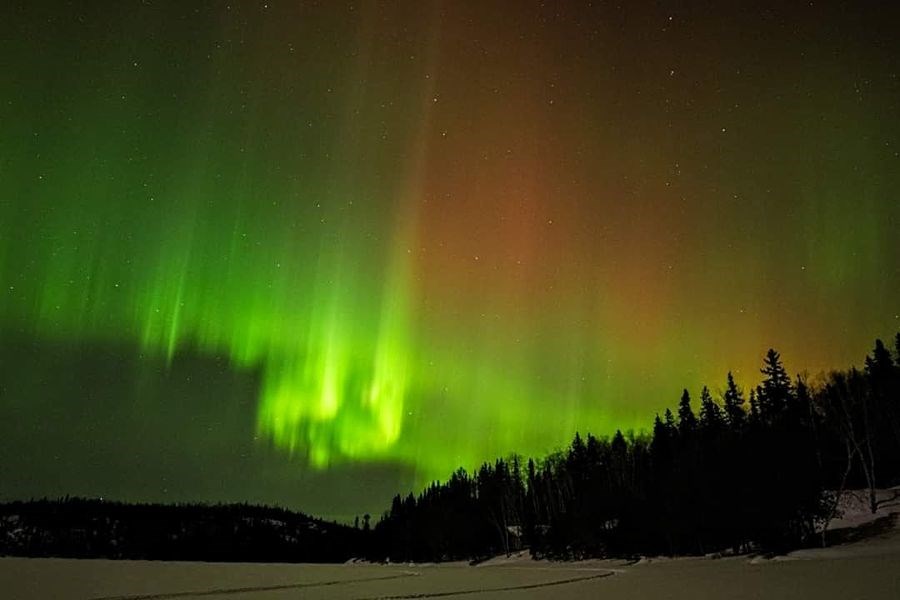THUNDER BAY — One of the best free spectacles available anywhere has caught the attention of numerous sky-gazers in Northwestern Ontario.
The northern lights have put on a splendid show this winter.
Also known as aurora borealis, the colourful display occurs in the northern sky when charged particles from the sun — electrons and protons — collide with gases in Earth's upper atmosphere, creating light energy.
This process can happen at any time, but the amount of energy released by the sun cycles over many years, and is currently approaching its peak.
Al Stecky, who lives at Hawkeye Lake in Fowler Township, is one of many area residents venturing outside to catch the northern lights on their cameras.
He posted some photos on social media on Monday under the caption "A chilly and frosty Sunday night on the ice."
Stecky told TBnewswatch that although the images are already excellent, the aurora borealis will get even better next year.
"We're heading towards what's called the solar maximum around 2023/2024. The sun goes into about an 11-year cycle. It goes up for 11 years, and it dies down for 11 years, roughly," he said.
"Right now we're headed for the maximum. They say around 2024/2025, it should start getting really, really good, and then it will start to ebb off again. So the action is picking up."
Stecky is a hobby photographer, and feels lucky to live in a spot with a frozen lake in his front yard and no city lights to impede the view of the night-time sky.
He enjoys sharing his photos, and said he receives a lot of feedback.
"Everybody does like them. I get a very positive response. They like to see them because nobody wants to be out in the cold when its 22 below and the wind is blowing," he said. "But the colder it is, the better it is. When it's -35 out there you freeze your tush off but you get some fantastic pictures."
Stecky uses a wide-angle lens that lets in a lot of light.
"It depends on the strength of the aurora. If it's a very powerful aurora, then you can get away with taking two, three or four-second shots. If it's a very dull aurora, you've got to let the camera basically suck in a lot of light, so then you're looking at 10, 15 seconds, or 30 seconds."
He explained that "the camera is different from your eye. You can set it and it can take in as much light. When you're looking at it with your eye, your eye is constantly trying to focus and adjust and what not. Human eyes are not really good to watch the aurora. That's why you see all the colour through the camera."
